Otsu Tourism Photo Contest 2024

The Otsu Tourism Association is holding a photo contest “Otsu Tourism Photo Contest 2024”, featuring the beautiful landscapes, delicious food, historic sites, and everyday life of the Otsu area (Ikeda-cho, Otsu-cho, Sakuragaoka, Negishi-cho, Hashirimizu, Maborikaigan, and Mabori-cho). We invite you to submit photos that capture the charm of Otsu.
The contest will take place from July 1 (Monday) to October 18 (Friday), 2024, and the winners will receive wonderful prizes! We look forward to your amazing photos.
About Otsu Tourism Photo Contest 2024
Contest Period
July 1, 2024 (Monday) to October 18, 2024 (Friday) (Submission deadline)
Location
Otsu Area in Yokosuka City
1. Ikeda-cho
2. Otsu-cho
3. Sakuragaoka
4. Negishi-cho
5. Hashirimizu
6. Mabori Kaigan
7. Mabori-cho
How to Apply
Participants can submit up to three photos in one of the following ways:
1. Send printed photos (A4 size or larger) by mail or deliver them in person to the Otsu Administration Center.
Address: Otsu Tourism Association, Otsu Administration Center, 3-34-40 Otsu-cho, Yokosuka City, Kanagawa Prefecture, 239-0808
2. Submit digital photos (minimum 2516×3544 pixels or equivalent to 9 megapixels) through the online form provided on their official website.
Prizes
- Grand Prize (1 winner): ¥10,000 gift voucher
- Excellence Prize (3 winners): Kaneyo Dining lunch pair voucher
- Winning Prize (5 winners): Delicious Plaza meal voucher
- Chairman’s Award (1 winner): Aqua Mare lunch course pair ticket
- Student Special Award (5 winners): Patisserie Kuro & Cachecache assorted baked goods
Note: Prize details are subject to change without prior notice.
Result Announcement
Award-winning photos will be announced on the contest webpage and displayed at the Otsu Administration Center around November.
Past Winning Entries: Otsu Tourism Photo Contest 2023
Introducing the Winning Entries from the 2023 Otsu Tourism Photo Contest.
Chairman’s Award
“Hashirimizu Travel Sentiment” by Haruo Nomura

Outstanding performance award
“Walking” by Hiroshi Nakagawa

“Cherry Blossom Scenery at the Water Source Area” by Osamu Takeuchi

Special award
“Onnamikoshi” by Yuka Komazaki

“Summer Sky and Tropical Stroll Path” by Toshiichi Mochizuki

“Summer Solstice Sunrise (2023)” by Yumiko Suzuki

“Onbashira Festival” by Miki Okazaki

“Town Awakening to the Sea Breeze” by Yasumitsu Sasaki

Student Special Award
“Battle” by Kota Yamada

2023 Official Webpage: Otsu Tourism Photo Contest
Photo spots in Otsu Area
Here are some recommended photography spots in Otsu that are perfect for photography enthusiasts. Take a look as inspiration for your next photo outing!
Hazaki Ryokuchi Observation Deck
Hazaki Ryokuchi is an observation deck located on the slope from Hashirimizu Reservoir to Kannonzaki. On clear days, you can see Mount Fuji across Tokyo Bay.
The observation deck is an excellent spot for photography, especially during sunset. Around April 7 and September 5, you may even have the chance to see the “Diamond Fuji”!
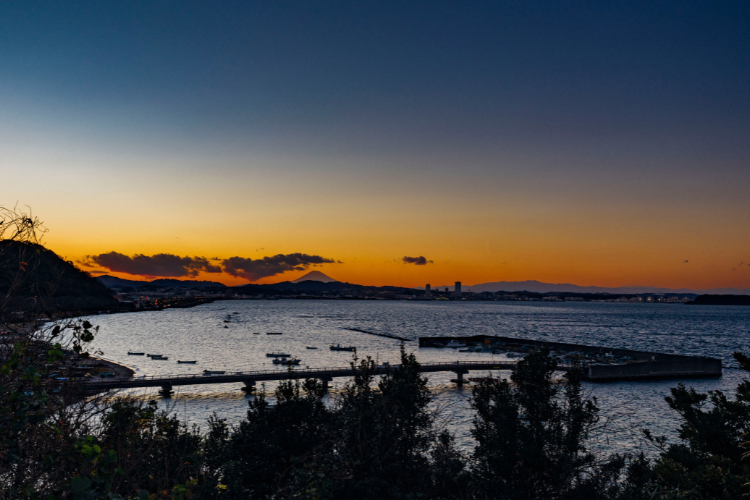
Hashirimizu Shrine
Hashirimizu Jinja (走水神社) is a Shinto shrine that enshrines Japan’s legendary figure, Prince Yamato Takeru no Mikoto, and his consort, Princess Ototachibana-hime no Mikoto.
The shrine’s origin is linked to an episode during the journey of Prince Yamato Takeru, the son of Emperor Keikō, to Kazusa Province.
It is said that Princess Ototachibana-hime calmed the turbulent sea by throwing herself into it, as recorded in the “Kojiki” and “Nihon Shoki.”
Princess Ototachibana-hime, known for her deep affection and trust in Prince Yamato Takeru, is revered as a deity. Hashirimizu Jinja has gained recognition as a spiritual place for fulfilling romantic aspirations and enhancing feminine energy.
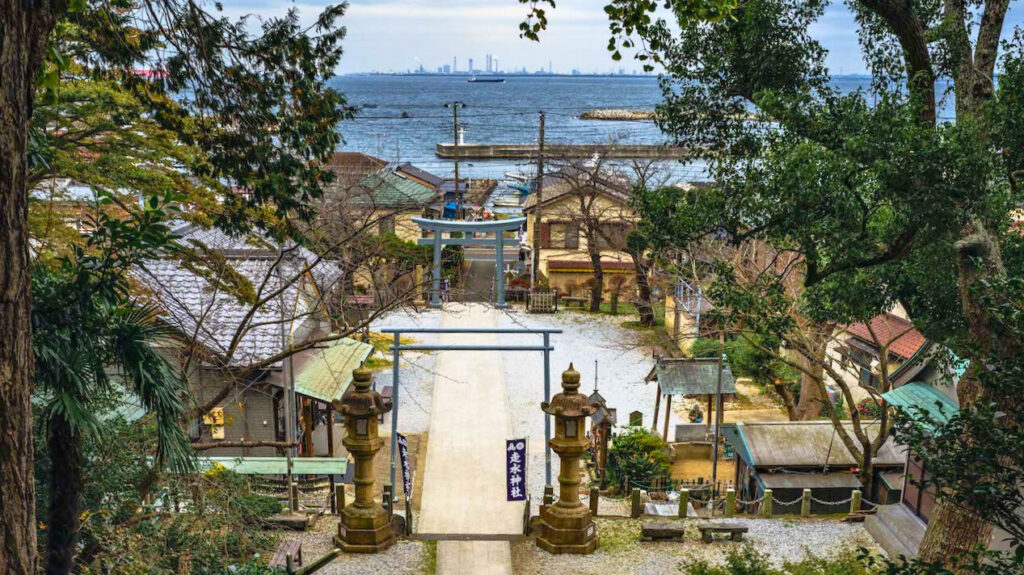
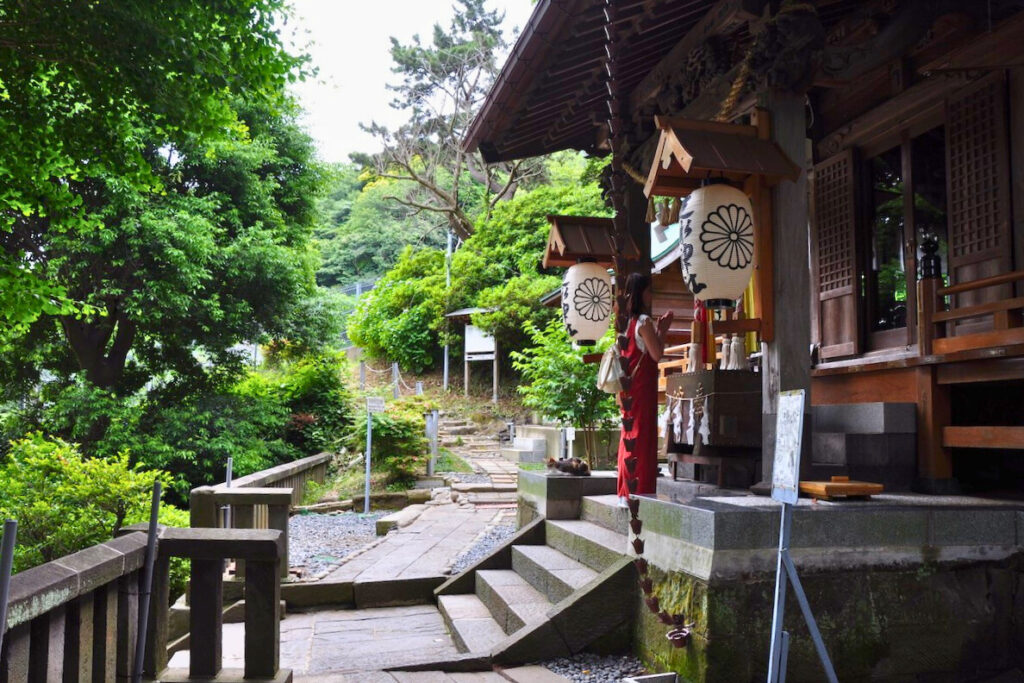
Mabori Biological Garden
The Mabori Biological Garden spans 3.8 hectares and boasts rich natural environments. It offers a parkway that takes approximately 20 minutes to walk around.
The garden is dedicated to preserving the natural environment, revitalizing the waterfront area, and nurturing rare plant and animal species. These include the “Genji Botaru” firefly and the “Oshima-sakura” cherry tree, both of which have become scarce on the Miura Peninsula.
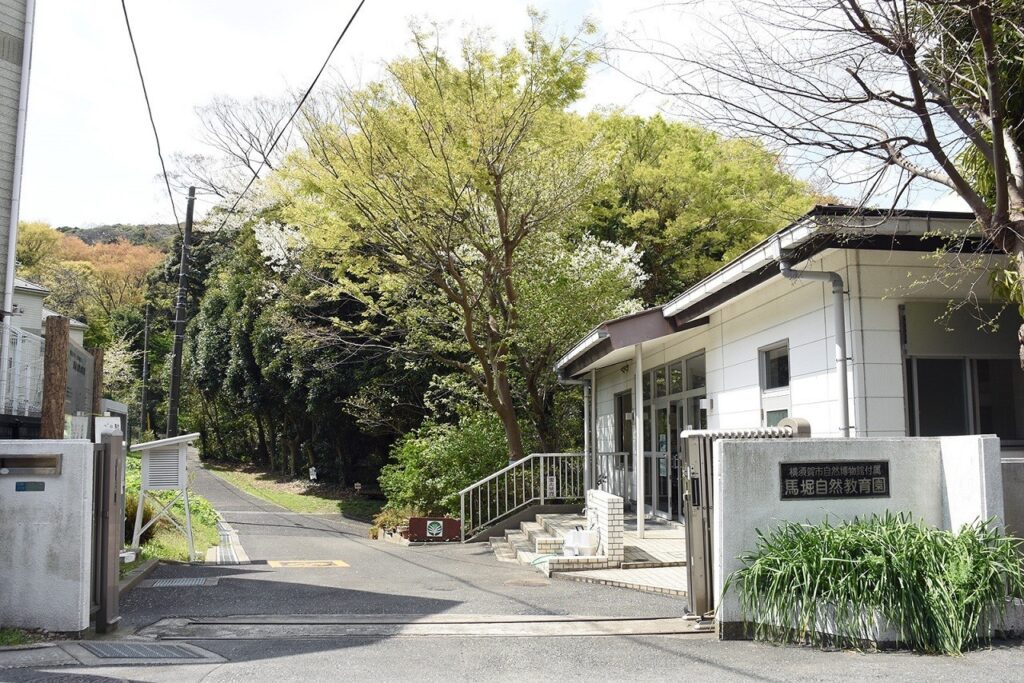
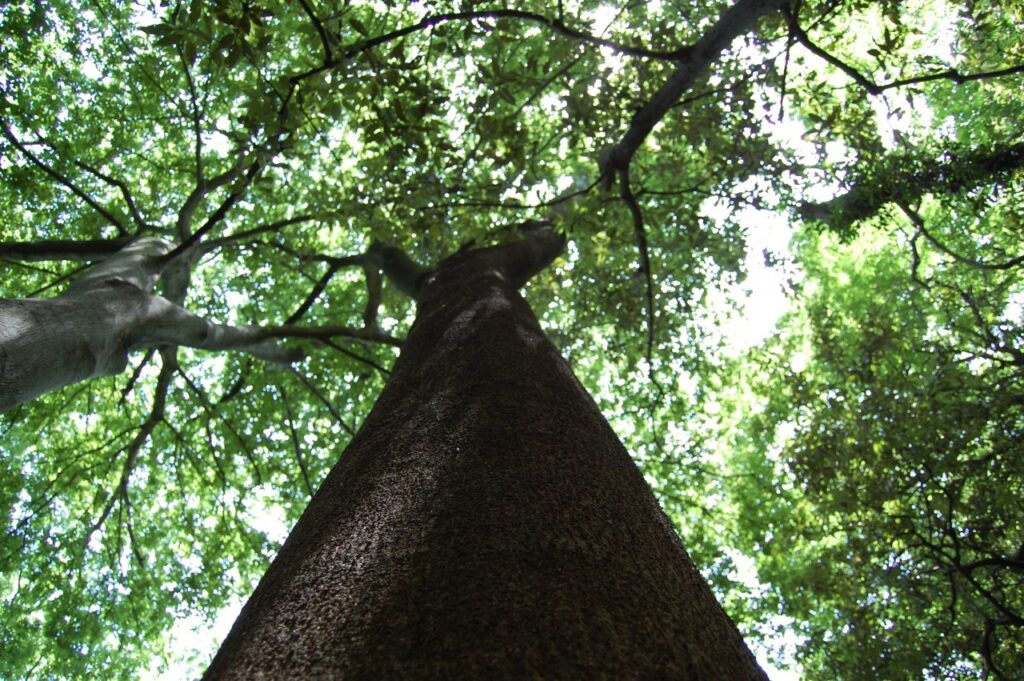
Hashirimizu Reservoir
Hashirimizu Reservoir was the Yokosuka Steel Works (later shipyard) where modernization of Japan began in Meiji 9 under the command of French engineer Verney It is a historical source of water originating from its use as a water source for. Both brick reservoirs and concrete water purification reservoirs have been designated as state-registered tangible cultural properties and Japanese heritage cultural properties, and are still active as active facilities.
The water that springs at a rate of approximately 1,000 cubic meters per day is renowned for its rich mineral content and exquisite taste.
Known as “Verny’s water,” the spring water can be consumed from a faucet located in the parking area.
Note
1. The spring water is filtered through a membrane filtration system.
2. Hashirimizu Reservoir is also famous as a cherry blossom viewing spot. The cherry blossoms blooming against the backdrop of the blue sea are truly magnificent.
During the cherry blossom season (late March to early April), the site is open to the public for hanami.
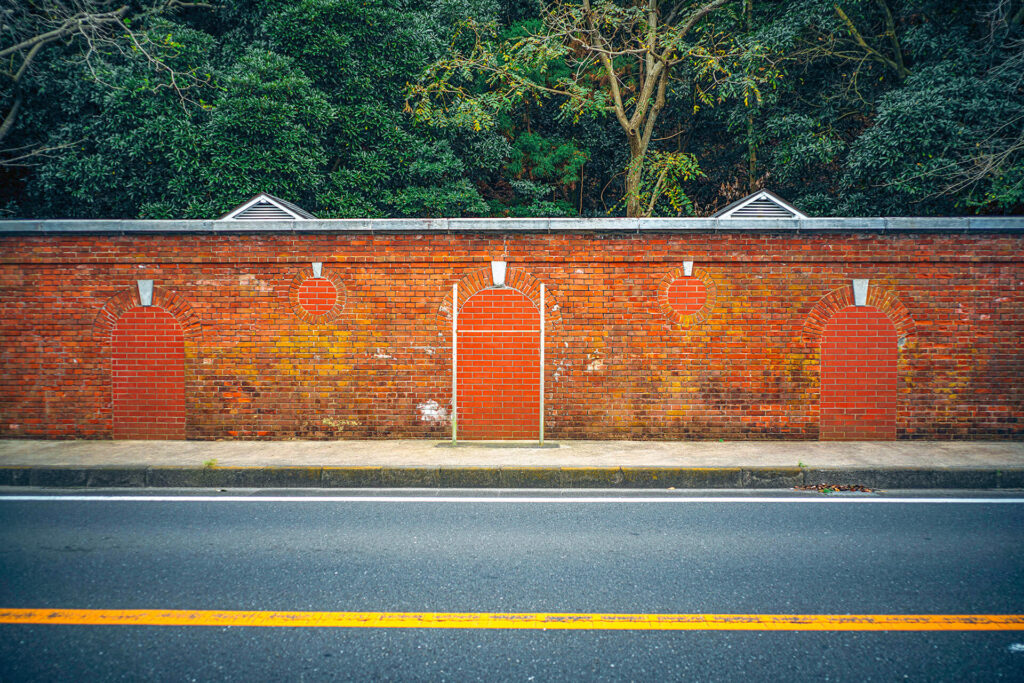
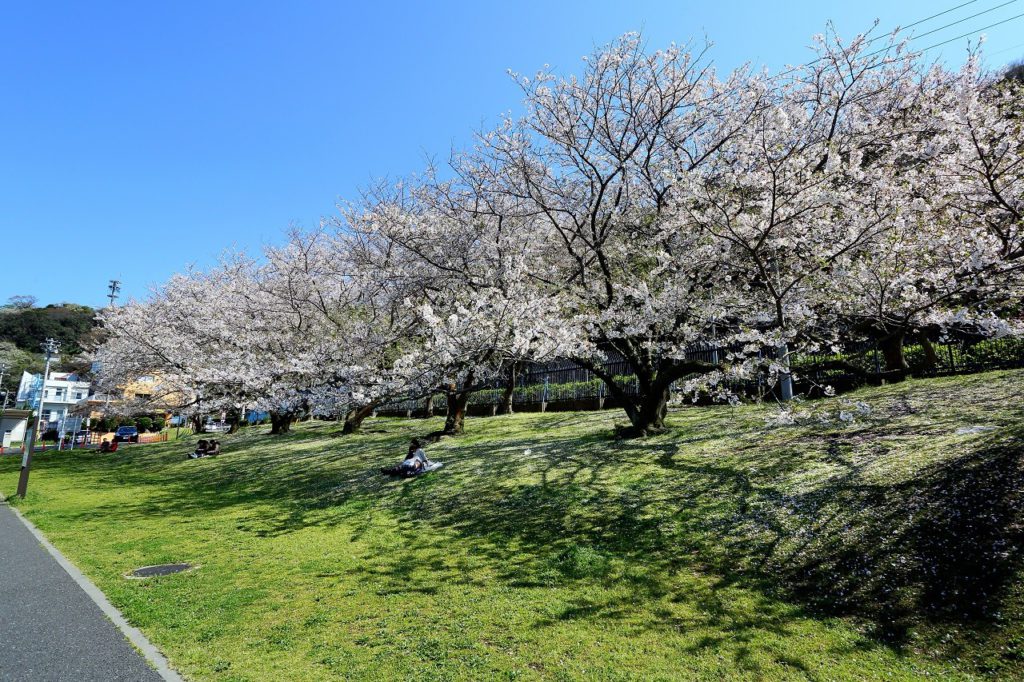
Maborikaigan Park (Umikaze Art)
Umikaze Gallery is an art gallery designed to showcase Yokosuka’s beautiful sea to both residents and visitors, prevent graffiti on the coastal embankments, and enhance the overall scenery. It is located on the Mabori Coast Tidal Surge Protection Embankment, which is part of the “Umikaze no Michi (10,000-meter Promenade of Sea and Greenery)” stretching from JR Yokosuka Station to Kannonzaki. This gallery fosters a sense of connection with the sea.
The artworks are created by the Art Club of Yokosuka General High School, a school in Yokosuka City. The club has a distinguished record of winning various competitions, including the “All Japan High School Design and Illustration Exhibition,” the “International High School Art Exhibition,” and the “All Japan Student Art Exhibition.”
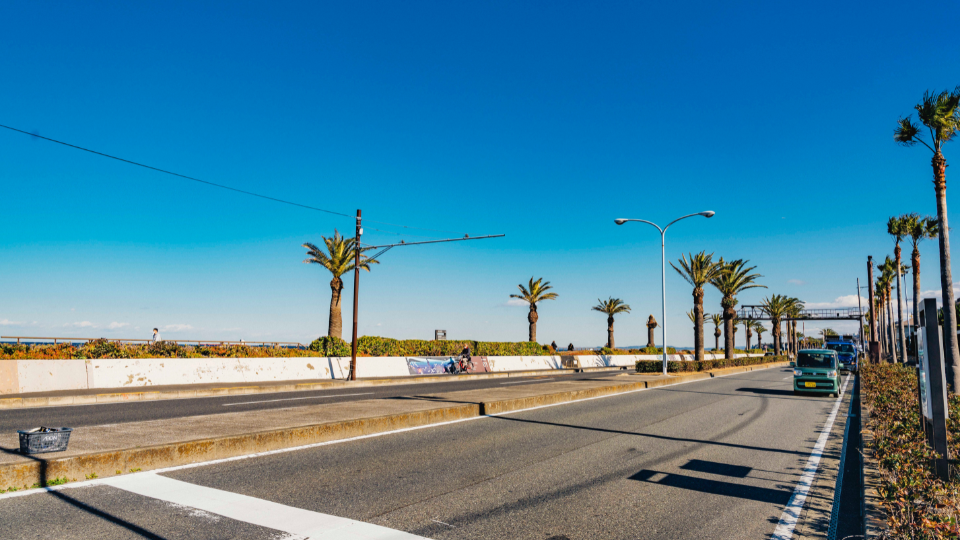
Hashirimizu Lower Gun Battery Site
The “Hashirimizu Lower Gun Battery Site” was constructed during the Meiji period and remained in use until the end of World War II. Most of the remains, including the gun seat, ammunition depot, and barracks, are still in good condition.
Situated on top of a small hill, the site offers a panoramic view of Tokyo Bay from the walking path, making it a great spot to watch ships traveling along the Uraga route.
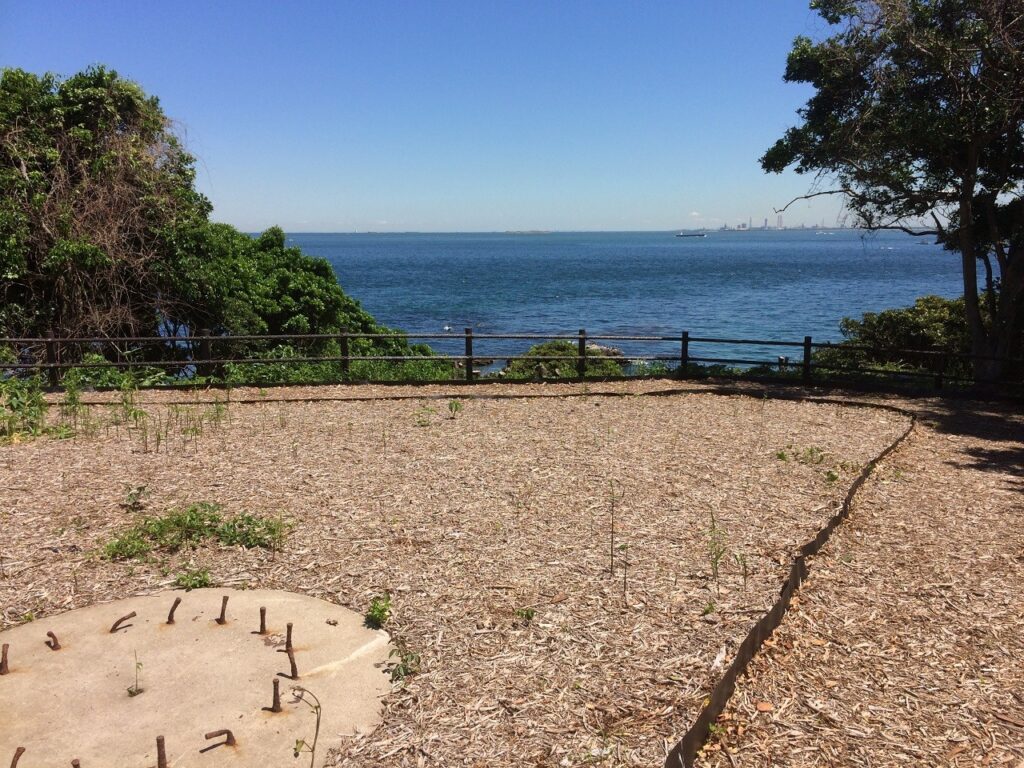
Rules and Notes
- Submitted photos must be unpublished.
- Include title, location of the photo, name, address, age, and contact information on the back of each print. For students, also include school name and grade.
- Copyright and usage rights of awarded photos belong to the organizers.
- Digital copies of awarded photos must be provided upon request.
- Photos will be stored until January of the following year for return requests; afterward, they may be discarded.
- Each person is eligible for one prize only.
- Minor editing is allowed, but avoid compositions using free materials or deviating significantly from actual landscapes.
For further details, please visit the official contest page.


